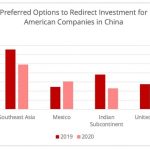
By K Raveendran
India’s integration into the global value chains and favourable container pricing trends are making the country an ideal choice as an attractive ‘China plus one’ alternative.
The improvement in container availability, coupled with falling rates, is offering a great opportunity for container trading and leasing in the Indian sub-continent as the world prepares to establish more distributed supply chains, not relying on a linear supply chain anymore, according to Container xChange, an online container logistics platform for container trading, leasing, and management. This is considered as a potential game-changer for the region and the global economy, especially as western importers move towards a China+1 procurement strategy.
The government of India has been making special efforts to integrate with global value chains and take advantage of the China+1 approach adopted by multinational companies. Additionally, the country is actively negotiating free trade agreements with important trading partners, which is likely to be well-received by investors.
In March, container prices in China experienced a significant decline of 62 percent on average when compared to the same period last year. In India, the drop year in average container prices was only 39 percent year-on- from $3288 in March 2022 to $2088 in March 2023. This means that the Indian rates are holding up relatively well, compared to China’s.
The Indian sub-continent and the Middle East are now creating hubs for manufacturers, building infrastructure to support ocean and air transport, and actively making consumer markets more compact. This emerging trend of regionalization is not only viable for businesses but also strategic. It presents a significant opportunity for container shipping companies to expand their supply chains and provide efficient and cost-effective solutions to their customers.
Asia’s maritime and supply chain industry has been on a tumultuous ride, experiencing significant disruptions in trade patterns resulting in container prices dipping. The year-on-year comparison of the Container Availability Index (CAx) in Shanghai, for instance, presents some interesting insights into the problem of excess containers at the ports in China.
Traditionally, the CAx values in Shanghai during the first quarter have been lower than the demand due to a higher number of outbound containers compared to inbound containers. However, this year, the trend is just the opposite with a CAx value staying over threshold. This is attributed to the drop in exports, owing to reduced demand post the peak season quarter (October- December) and the Chinese New Year shutdowns.
Consequently, the number of containers at ports is usually lower during the first quarter in the last two years. However, the situation this year is different. With a demand deficit and a higher number of containers lying idle at the ports, there is a significant rise in inbound containers in China as observed in the current quarter. According to the Container xChange analysis, container prices between March of this year and the same period last year have seen an average fall of 62 percent in prices across China.
The Asia-Europe container shipping lane, which is critical, has experienced a rapid decrease in demand since the summer of 2022, resulting in a sharp decline in container shipping spot freight rates. Carriers have responded by cutting services or cascading capacity to regional trades. However, this has left many empty containers stranded across Europe instead of being returned to Asia and other origin markets for loading with more exports. This accumulation of boxes is expected to gradually decrease when export demand rises again, with the majority being returned to Asia.
Container fleet operations on the transatlantic route have been continuously expanding. In the year 2022, it has been reported that an additional 162,300 TEUs were included in the fleet, with the most significant increase seen in services connected to the Middle East and the Indian subcontinent.
In 2023 Q1, Shipping giants such as Hapag-Lloyd, COSCO, and OOCL either suspended or closed their services in China and redeployed their ships in the transatlantic service. Additionally, Siemens, one of the world’s largest industrial conglomerates, is keen on investments in Southeast Asia to reduce supply chain risks amidst the ongoing geopolitical tension between the US and China.
COSCO Shipping Ports has invested in 25 percent of the equity in Egypt’s Sokhna New Container Terminal, and the project’s total investment is approximately $375 million. Once complete, the terminal’s container capacity will reach 1.7 million TEUs, providing ample opportunities for growth. CMA CGM Group has also announced the launch of the new Bangladesh India Gulf Express (BIGEX) service that started sailing from the port of Chittagong in April.
A.P. Moller – Maersk (Maersk) has integrated the two emerging markets of West and Central Asia and Africa – to form a new combined IMEA (Indian sub-continent, Middle East and Africa) region. The primary markets for this new region will be India, Pakistan, the UAE, Saudi Arabia, South Africa, Kenya, Ivory Coast, Cameroon, Nigeria, Senegal, and Ghana, among others. (IPA Service)
The post India Emerges As Key Player In ‘China Plus One’ Strategy Of Global Container Trade first appeared on IPA Newspack.


